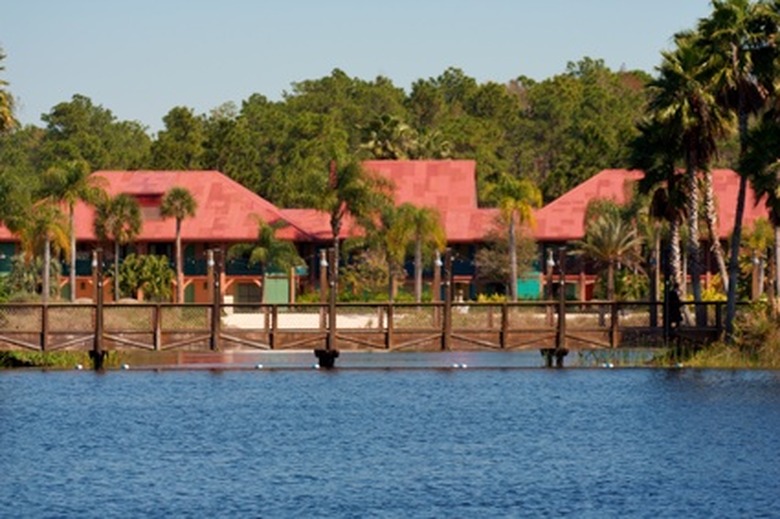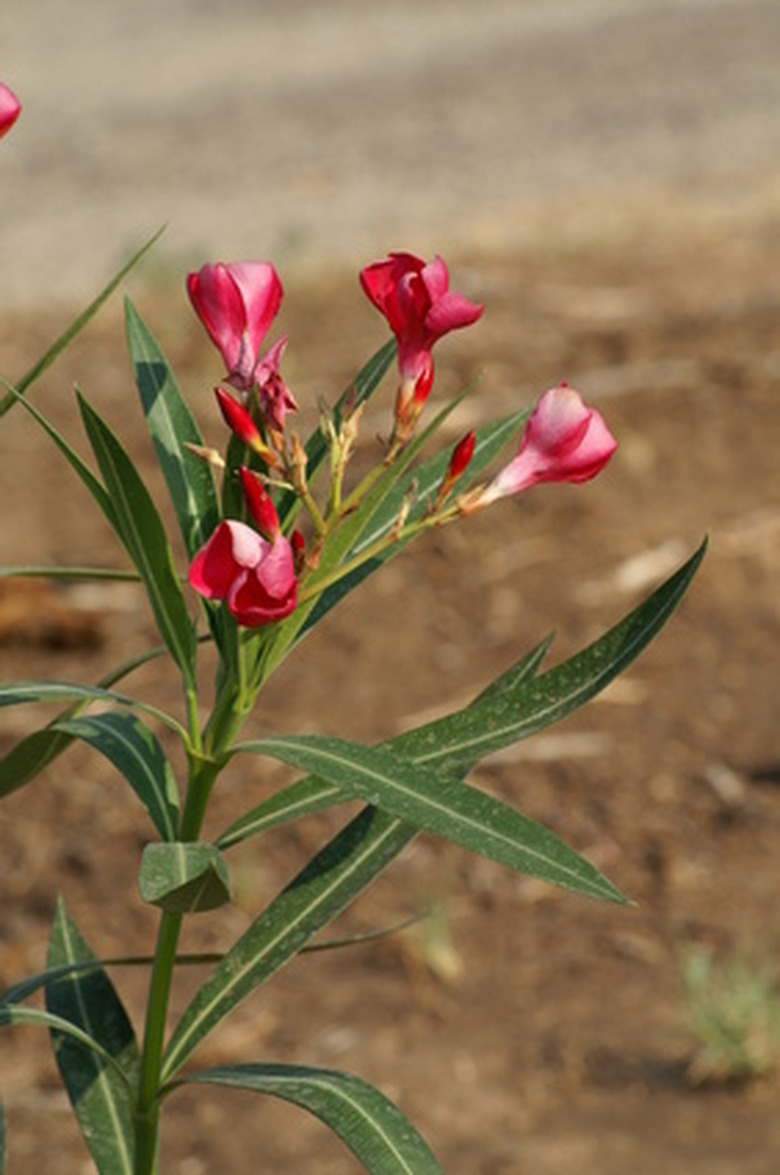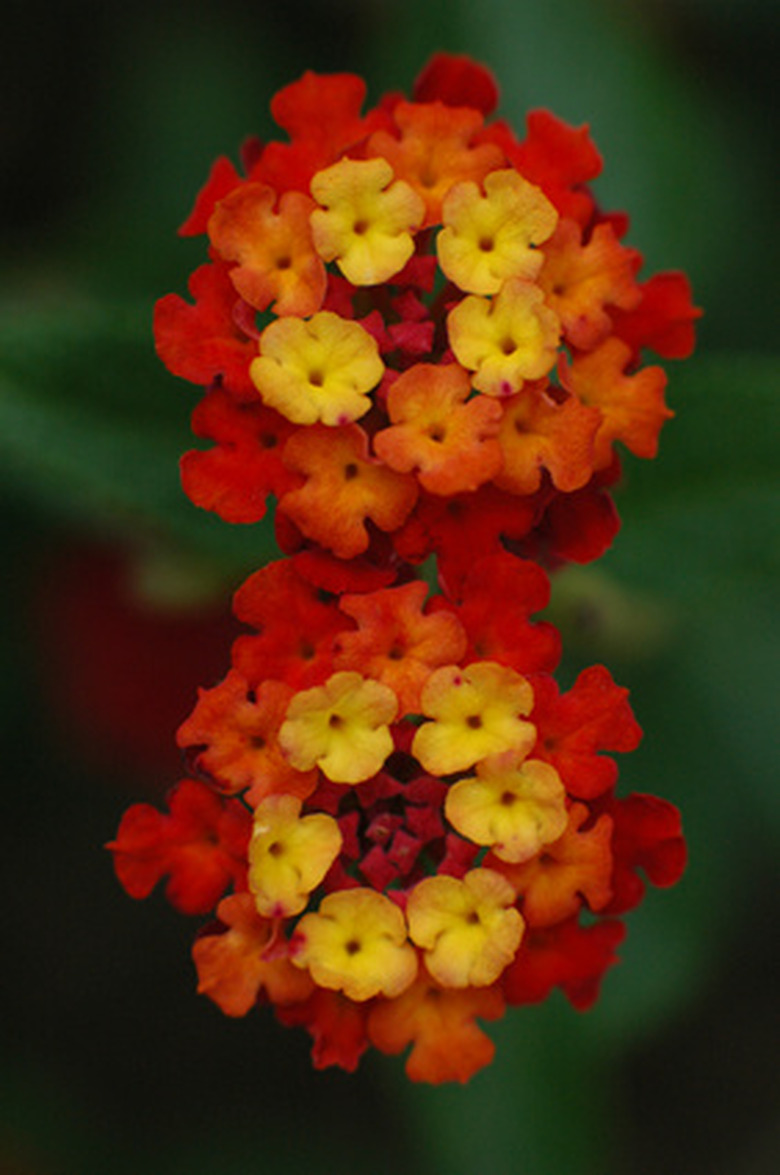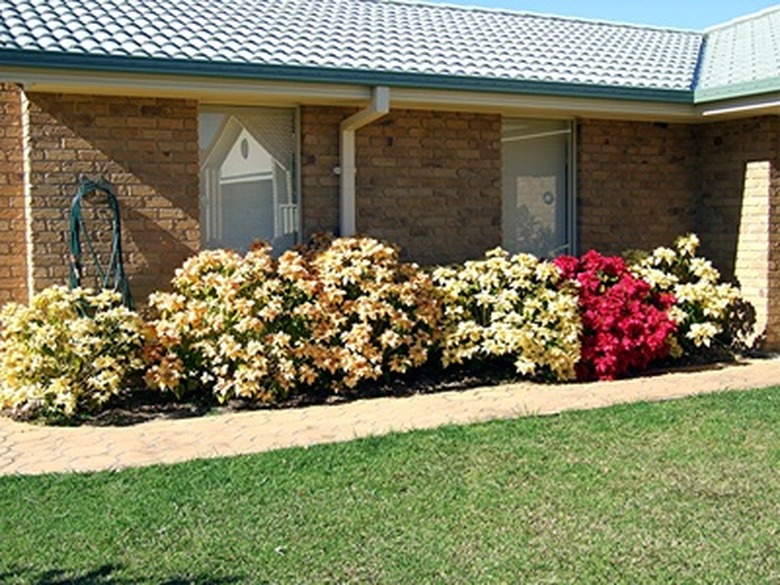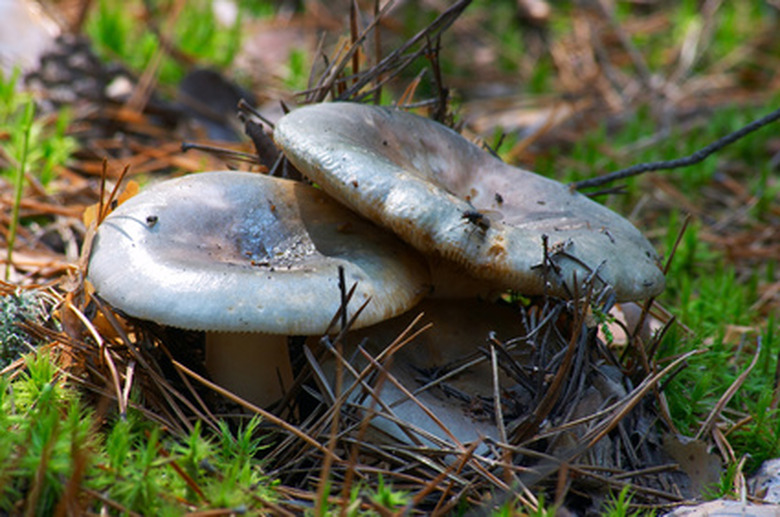Poisonous Plants In Florida
Poisonous plants are found in the wild in Florida, but there are a great number of toxic plants that have been incorporated into the state's yards and gardens as ornamentals. It is a good idea to know the names and characteristics of plants you, or your family and pets, come in contact with and be aware of any health problems they may cause. Symptoms vary widely between poisonous species, but some common effects are: slurred speech, burning, irritation, nausea, vomiting, seizures, heart complications, multiple organ failure, paralysis and even death.
Caladiums
Caladiums (Caladium bicolor) are common foliage plants, often used as a bedding plant in landscapes. They are known for their large, up to 14 inch long, colorful leaves. The stems, roots and leaves of the caladium are toxic. The symptoms of poisoning are immediate pain, burning and irritation in the lips, mouth and throat. Slurring of speech can also occur.
- Poisonous plants are found in the wild in Florida, but there are a great number of toxic plants that have been incorporated into the state's yards and gardens as ornamentals.
- The stems, roots and leaves of the caladium are toxic.
Oleander
Oleander (Nerium oleander) is a multibranched shrub that grows up to 20 feet tall, spreading from 6 to 12 feet. It has smooth, skinny, strap-like leaves with flowers that may be white, yellow, pink or red. All parts of the oleander plant are toxic.
Most poisonings are the result of chewing the plant, or by breathing in smoke from burning plants, but some skin irritation is possible through contact. Symptoms include stomach cramps, dizziness, low blood pressure, nausea, vomiting, slow heart rate and seizures.
Glory Lily
Glory Lily (Gloriosa rothschildiana) is a climbing, perennial that grows to 8 feet tall. It has a distinctive flower, lily-like, crimson, yellow or white in color. It is often grown along fences and trellises. Ingestion of the lily can cause severe symptoms, including vomiting, diarrhea, multiple-organ failure (liver, kidneys, respiratory failure), fever and shock.
- Oleander (Nerium oleander) is a multibranched shrub that grows up to 20 feet tall, spreading from 6 to 12 feet.
- Ingestion of the lily can cause severe symptoms, including vomiting, diarrhea, multiple-organ failure (liver, kidneys, respiratory failure), fever and shock.
Lantana
Lantana (Lantana camara) is an evergreen shrub, up to 5 feet tall. It flowers in the summer and in the fall and has small bunches of flowers, 2 inches across, in shades of orange, yellow, pink or red. The berries are most poisonous part of lantana and, if eaten, symptoms include shallow or difficult breathing, vomiting, diarrhea, stomach cramps, fever and seizures. All parts of lantana can cause skin irritation.
Poinsettia
Poinsettia (Euphorbia pulcherrima) is a common potted plant during the holidays, but in Florida can grow as an accent plant in the landscape. Grown outdoors, it is a shrub capable of growing 12 feet tall. The flower-like, leafy bracts that may be white, variegated or many shades of red contain a milky sap that can cause skin irritation and if enough is eaten, can cause nausea and/or diarrhea. All parts of the poinsettia can cause skin irritation.
- Lantana (Lantana camara) is an evergreen shrub, up to 5 feet tall.
- Poinsettia (Euphorbia pulcherrima) is a common potted plant during the holidays, but in Florida can grow as an accent plant in the landscape.
Angel's Trumpet
Angel's trumpet (Brugmansia) is a small tropical tree, growing up to 30 feet tall, or smaller when container grown. It has a distinctive trumpet-shaped flower with white, pale peach or pale pink flowers that range in size from 6 to 24 inches long, depending on the variety. The flowers, leaves and seeds, when ingested, cause symptoms such as, hallucinations, increased blood pressure and pulse, fever, dilated pupils, dry mouth, muscle weakness and paralysis.
Poison Ivy
Poison Ivy (Toxicodendron radicans) is a wild shrub with trailing growth or a vine if support is available to it. Poison ivy is trifoliate, meaning, a compound leaf with three leaflets; hence, the saying "leaves of three, let it be" In some people, direct contact with poison ivy can cause severe skin redness, itching, swelling, and blisters. These plants are poisonous if swallowed or if smoke from burning plants is inhaled.
Brazilian Pepper
Brazilian pepper (Schinus terebinthifolius) is an evergreen shrub or tree, usually seen around 15 to 20 feet tall. This variety, known for its bright red berries that develop in dense clusters has become an invasive plant in Florida. In some people, direct contact can cause severe skin redness, itching, swelling, and blisters. These plants are poisonous if swallowed or if smoke from burning plants is inhaled.
- Angel's trumpet (Brugmansia) is a small tropical tree, growing up to 30 feet tall, or smaller when container grown.
- Poison Ivy (Toxicodendron radicans) is a wild shrub with trailing growth or a vine if support is available to it.
Wild Mushrooms
It takes a mycologist (mushroom expert) to determine which types of wild mushrooms are safe to eat and ones are toxic. It's best to not take the risk and end up accidentally poisoned. Symptoms range from severe nausea, vomiting, diarrhea and abdominal pain to renal failure, hallucinations and death.
References
- UF/IFAS School of Forest Resources & Conservation Florida Forestry Information: Trees of Florida- Anacardiaceae
- "Landscape Plants for Subtropical Climates;" Bijan Dehgan; 1998
